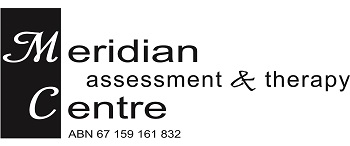Obsessive Compulsive Disorder Counselling in Sydney
Obsessive-Compulsive Disorder or OCD used to be classified under the anxiety disorders. This changed in 2013 as our understanding of the disorder developed. Whilst anxiety is a big part of OCD, the disorder is thought to involve specific brain circuits and patterns that set it aside from other anxiety disorders.
OCD shares similarities with conditions like body dysmorphic disorder, hoarding disorder, trichotillomania (recurrent, irresistible urge to pull one’s hair out), and excoriation disorder (recurrent, irresistible urge to pick at one’s skin, causing damage like sores or wounds).
Once thought to be relatively rare, community studies have estimated an average incidence of 2.5% in the general population. In Australia, the lifetime prevalence of OCD is estimated to be around 3%. The average onset of the disorder ranges from early adolescence to mid-twenties. However, many individuals with OCD suffer for years experiencing significant emotional and psychosocial impairment without seeking treatment. Due to the usually bizarre nature of the symptoms, some sufferers may worry that they are “going mad” or that they will be “locked up” or that their children will be taken away from them.
The research literature indicates high comorbidity (co-occurrence) between OCD and a number of other disorders including Major Depressive Disorder, and anxiety disorders such as: Generalised Anxiety Disorder, Panic Disorder, Specific Phobias, Social Phobia, etc.
The core features of OCD are:
(1) avoidance of objects or situations which trigger obsessions.
(2) obsessions.
(3) compulsive behaviours and thought rituals.
OBSESSIONS
Obsessions are unwanted, intrusive, recurrent thoughts, impulses or images. They are usually regarded by the individual experiencing them as repugnant, senseless, frightening, unacceptable and difficult to dismiss, and cause significant distress. Common obsessions are repeated thoughts about contamination (e.g. fears that one might contract a disease such as AIDS through touching a door knob), repeated doubts (e.g. fears that one may have hit a pedestrian whilst driving home), a need to have things in a particular order (e.g. intense distress if objects are moved around from “their usual place”), aggressive or horrific impulses (e.g. to hurt one’s child or take one’s clothes off in a public place), and sexual imagery (e.g. a heterosexual man seeing images of himself performing fellatio on another male).
Obsessions in OCD involve more than excessive worries about real life situations (for example the kind of worries which characterize Generalised Anxiety Disorder), and they differ from the obsessional ruminations sometimes encountered in other disorders where the content of the thought is relevant to the disorder (for example, an obsession with food as observed in an Eating Disorder, or obsessive guilt as sometimes present in Major Depressive Disorder).
COMPULSIONS
Compulsions have two defining characteristics:
- They involve repetitive behaviours or mental acts which the person feels driven to perform in response to an obsession or rules that must be applied rigidly. (Sometimes OCD presentations which involve mainly mental acts can unfortunately ‘fly under the radar’, i.e. not be recognized as OCD by inexperienced practitioners.)
- The compulsive act is aimed at preventing or reducing distress, or preventing some dreaded event or situation. However, the act is not connected in a realistic way with what it is designed to neutralise or prevent or it is clearly excessive. For example, a person with OCD had obsessive images involving dreadful events befalling people he knew. In order to “undo” the obsession, he would count in a ritualistic way avoiding numbers which were considered “unlucky” and emphasising “lucky” ones. If he made a “mistake” he would feel compelled to start again lest he be responsible for the imagined tragedy.
Often OCD sufferers attempt to avoid obsessions by keeping away from situations or objects which trigger them. For example, an OCD sufferer with violent obsessive thoughts about harming her children and husband locked away all the knives in her house and made sure that she was never alone with the children. Avoidance often results in increased psychosocial impairment and is an important feature of OCD.
TREATMENT OF OCD
The main therapy for OCD is called Cognitive Behavioural Therapy (CBT), or more specifically, a type of CBT called Exposure and Response Prevention therapy (ERP).
ERP in more detail
Exposure to obsessional cues and strict response prevention of ritualistic behaviours is considered the treatment of choice for OCD. The technique involves repeated prolonged exposures of sufferers to situations that provoke discomfort, and instructions to refrain from ritualising throughout the treatment programme regardless of the strength of the urges to do so. Exposures are usually graded so that stimuli that produce moderate distress are encountered prior to more upsetting ones, and treatment sessions typically include both imaginal and in vivo exposure exercises to threat related cues. Homework assignments are an integral part of the therapy and involve self-directed exposure exercises in between sessions. Detailed reviews of numerous studies using exposure plus response prevention have indicated that approximately 65% to 75% of patients treated with this procedure were improved and stayed so at follow up.
IN SUMMARY
Effective treatment of OCD combines specialised therapy, mainly Exposure and Response Prevention. Early intervention and consistent support can significantly reduce symptoms and improve quality of life. If you or a loved one is struggling with OCD, seeking professional help is the first step towards recovery.

